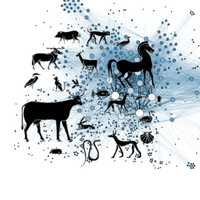Screening for links between behaviour and acute hyperthermia and hypoxia resistance in rainbow trout using isogenic lines
This article has been Reviewed by the following groups
Listed in
- Evaluated articles (Peer Community in Animal Science)
Abstract
In the context of adaptation to climate change, acute hyperthermia and hypoxia resistance are traits of growing interest in aquaculture. The feasibility of genetic improvement of these resistance traits through selection has been demonstrated in rainbow trout ( Oncorhynchus mykiss ). The present paper aims to test whether behaviour may be associated with acute hyperthermia and hypoxia resistance to better characterize these resistance phenotypes.
For this, six rainbow trout isogenic lines were phenotyped for behaviour variables and for acute hyperthermia and hypoxia resistance, using different individuals for each phenotype. The behaviour variables of the fish were phenotyped using an individual test in a new environment. The experimental design used 150 fish phenotyped per isogenic line for each resistance trait and 18 fish per isogenic line for behavioural traits, distributed in triplicates. Relations between acute hyperthermia and hypoxia resistance phenotypes and behaviour phenotypes were tested at the level of isogenic lines.
Significant differences in behaviour between isogenic lines were found, with some behaviour variables being highly associated with hypoxia resistance and moderately associated with acute hyperthermia resistance. Travelling distance, frequency of change between a risky and a safe zone of the tank and the percentage of time in movement in the behaviour test were strongly positively associated with acute hypoxia resistance. Travelling distance and frequency of change between a risky and a safe zone of the tank in the behaviour test were slightly negatively associated with acute hyperthermia resistance. This previously unstudied link between behaviour and resistance phenotypes also suggests that some behaviour variables could be used as predictors for acute hyperthermia and hypoxia resistance in fish. This result could lead to more ethical acute hyperthermia and hypoxia resistance phenotyping protocols, as the current protocols in use are classified as severe by French ethics committees.


